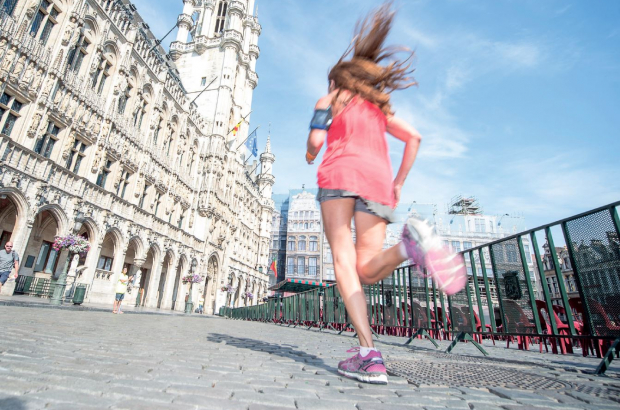- Daily & Weekly newsletters
- Buy & download The Bulletin
- Comment on our articles
Run for it: Our pick of the best places to go running in Belgium
Whether you’re a beginner or veteran, a fair weather fun runner or a dedicated marathoner, Belgium is a great place to do it. It has easy access to parks, hills, forests, fields and trails, as well as a wide range of races and events for all levels of runners.
As one of Europe’s greener capitals – over 8,000 hectares of green spaces – with parks and gardens around the city, Brussels offers a lot of options for runners. “Brussels is a great location for running because the terrain is so varied. You’re right on the edge of the woods,” says Rory Watson, a Scottish journalist, marathon runner and longtime Brussels resident. “I’ve been running for almost 36 years, and haven’t covered all the spaces here. It’s got great variety and you can get to places easily, by car or by public transport.”
Inside Brussels, the Woluwe and Laeken parks are usually scattered with runners, while most lunchtimes there is a parade of people jogging around Cinquentenaire, Leopold park, the Bois de la Cambre and the city-centre Parc Royal.
But Watson singles out the Forêt de Soignes for its lush scenery. “I can’t think of anywhere else with such a wide range of forest so close. It’s just 10 minutes from my home in Montgomery,” he says. Located mainly in the Flemish space between the Brussels-Capital Region and Wallonia, the forest extends from Tervuren in the north-east, through Boitsfort, Uccle and Hoeilaart, down to La Hulpe and Waterloo in the south.
Protected since the 15th century as ducal hunting grounds, the forest retains a primeval feel, and wild boar and deer still roam. The terrain underfoot is well suited for runners, with hard paths that don’t wreck the legs. Most intersections are marked, and maps are posted at each trailhead. “But you have to respect the forest, and not go off piste, or go on the paths reserved for cyclists or horseriders,” Watson points out.
Outside Brussels, there are the Ardennes for more hilly climbs and cobbled streets, while Flanders offers flatter trails, often alongside fields, canals and bicycle routes.
Join the club
There are two expat fun run groups in the capital, both part of the Hash House Harriers movement, where the group follows a trail laid on the ground with blobs of flour. The Brussels Hash House Harriers have been around for almost 40 years and run on Saturday afternoons; the Brussels Manneken Pis Hash House Harriers, set up 27 years ago, meet on Sunday afternoons or Monday evenings in July and August. The location of each run is always posted on their websites. More serious runners can join the Wednesday and Friday night workouts at the Free University of Brussels (VUB) track or the Tuesday night Royal Racing Club de Bruxelles speed workout at the Parc Sportif des Trois Tilleuls in Boitsfort.
There are many races of all distances and types in Belgium. The dominant event is the Brussels 20km at the end of May, which attracts 40,000 runners. There’s also the Brussels marathon and half marathon in October, while the Argenta Running Tour and the Challenge du Brabant Wallon are a series of races in other cities around the country. Websites like running.be list all races.
Belgium has also caught on to the new wave of running events that take it in new directions. Mud runs have taken off in a big way, with two series, Gladiator and Spartacus, leading participants through a series of military-style obstacles while caking them in thick mud. The Urban Trail in eight cities around the country takes runners through classic city locations over a number of days: the Brussels edition, in June, takes them into the library, the beautiful Grand Eldorado cinema and the Saint-Hubert galleries. And in the summer, the Color Run is a popular 5km route where runners are pelted with powder as they jog around the canal zone.
This article first appeared in The Bulletin Spring 2017. Pick up a copy in newsagents, browse the magazine here or subscribe today.









